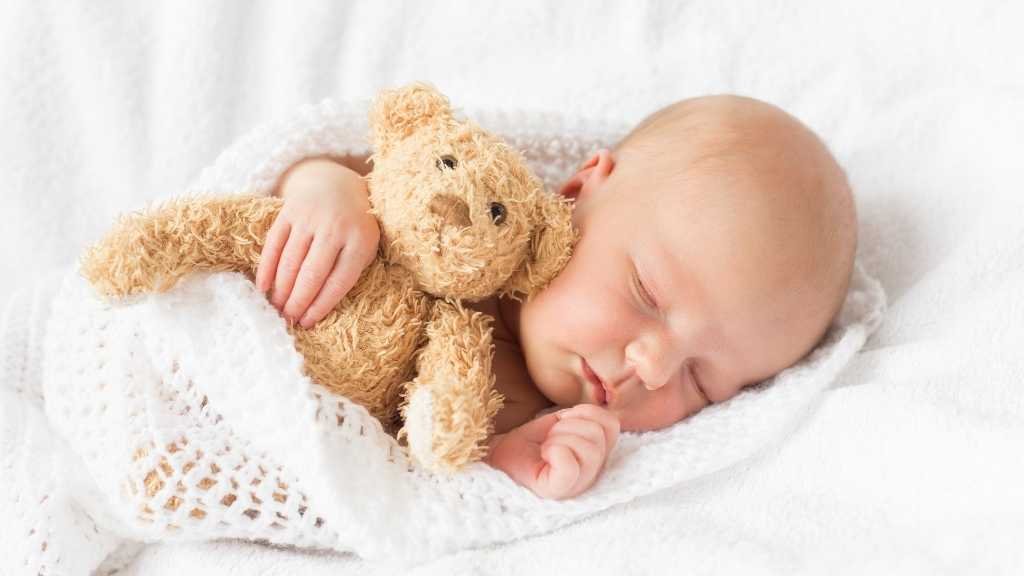Plastic Toys vs Natural Materials: The Difference to Your Baby
- Home
- Tips for Parents
- Plastic Toys vs Natural Materials: The Difference to Your Baby

When choosing toys, there’s a lot to think about. Price, design, colour, whether your baby will like it, will they grow out of it quickly, and much more. One factor that is really worth considering is the material the toy is made from. Babies aren’t normally very fussy about toys. If it looks interesting, you’ll have a happy baby. But that doesn’t mean that you shouldn’t be fussy about what toys you give your baby. Toys need to be safe, stimulating and age appropriate. Today, we focus on the ‘safety’ part of that, and we’re particularly focusing on what kind of materials make the best and safest toys for babies. Are plastic toys best? Or are wooden or soft materials better? The answer may surprise you.
Plastic
Plastic is convenient, flexible and cheap, making it a material that is extremely popular for a huge range of uses. Plastic toys are often the cheapest and can have a pleasant ‘chewy’ texture that babies love. Plastic toys are also easy to clean, often needing little more than a wipe to remove any dirt. But there are some serious drawbacks to giving your baby plastic toys.
Plastic is generally made from crude oil or natural gases combined with other chemicals to create a material that is appropriate for a specific use. The chemicals added in this process vary, but often include things like phthalates (to make plastic flexible and soft), cadmium (to stop the plastic from decaying), and lead (to protect colour and increase softness). Although you may have heard that chemicals like BPA have been banned from certain baby products, there are still chemicals added to plastic toys that have been shown to be very harmful to humans, and there are many other chemicals where no research has been done on how they affect our bodies.
For babies, the risk from harmful chemicals added to plastic is much greater because not only are their little bodies still developing but they like to put everything in their mouths, particularly toys. Chemicals often do not visibly leak from plastic, but what we do know is that chemicals can gradually leech out over time. Therefore, it’s definitely wisest to avoid having products that contain harmful chemicals around your baby in the first place.
It would be inaccurate to say that all plastic toys are dangerous. Some toy companies are quite meticulous in ensuring their products aren’t harmful to babies, and some even list the chemicals used in the production of their plastic. If you intend to continue buying plastic toys, make sure you buy only PVC-free and BPA-free products, and regardless of how ‘safe’ you consider them, always keep them away from your baby’s mouth. If that isn’t possible, it might be best to consider buying plastic toys only once your child has passed the stage where they put everything in their mouth, which is normally around age 3.
Wood
Wood has in recent years become more and more popular with parents as an alternative to potentially dangerous plastic. Wooden toys are generally more durable than plastic ones and less subject to ‘fads’, with the same wooden toys being popular year after year. It’s common to find wooden toys passed down through generations of families, making them valuable as heirlooms.
Wooden toys don’t generally contain harmful chemicals but beware of lower quality products made from things like plywood which could be stuck together with toxic glue. Also check what chemicals are used in any paint or coatings. To make sure your wooden toys are environmentally friendly, be sure to check that the wood used comes from a sustainably managed forest, generally you can find information about this on the label.
When choosing wooden toys, as adults we often tend towards ‘flashier’ or more intricate items that we find stimulating. But for babies, simpler toys can be far more stimulating. For example, a set of coloured wooden bricks can be fascinating for babies, and as they are less intricate, they really stimulate the imagination: they could be a tower, a house or anything else you can dream up together. Simple wooden toys can therefore be a great way to educate your baby.
There’s two downsides to giving babies wooden toys. Firstly, wooden toys tend to quite heavy, so as babies learn motor skills they may well hurt themselves if not careful. This isn’t normally a huge problem, but probably best to keep an eye on them if they’re playing with heavy wooden bricks or the like. If the wooden toys are not great quality, chewing them might also result in splinters. But overall, wooden toys are a good way to stimulate your baby and do not normally present a health risk.
Soft Toys
When we talk about soft toys, we are talking about toys made from a huge range of different fabrics and materials. There are synthetic materials like polyester and acrylic, and there are natural ones such as cotton, wool, bamboo and hemp. We would suggest being cautious about bamboo products, as these are often processed using strong chemicals, and are not as environmentally friendly as they sound. However, each company has different standards of sustainability and generally companies producing toys for babies are quite clear about the materials and chemicals they use.
Natural fabrics using organic cotton and wool are great options as they can feel really soft while also being safe for babies. If the product is dyed, then it would be a good idea to check that the dyes used are natural and any ink is not petroleum based. Babies love teddies and stuffed toys, and you’ll often see them clinging to these as they sleep. Just make sure these are washed regularly to avoid them becoming a home for dust-mites. Soft toys that are not frequently washed can be a major cause of allergic reactions in baby, with some babies developing rhinitis.
There are a lot of advantages of babies playing with soft toys. Soft toys can help babies develop their social skills, as many soft toys are in animal or human shapes, so they can become characters in pretend play. It is also well known that soft toys are particularly comforting for babies, providing a sense of security for your baby when they are feeling unsettled. Learning to look after things or people they care about is also a skill that soft toys can help your little one nurture. Overall, soft toys can be another safe and stimulating option for babies, provided that you ensure the material used is as natural as possible.
Final Words
There are big advantages to each of the different materials we mention above. Plastic toys are cheaper and also versatile. Wooden toys are more durable and stimulating. Soft toys are comforting and help babies develop social skills. But when it comes to choosing toys, safety must be a priority. Fortunately, most toy companies do provide you with the information you need to judge whether the toy contains harmful chemicals or materials. Ultimately, your baby is going to be happy with whatever toys you get them. So with a little research, you can rest assured that your baby is going to be safe, as well as happy.
Little Blooms Baby Gifts Rattles
As mentioned above, soft toys made from natural materials are both safe and educational for your baby. We’re happy to introduce ‘The Rattle Collection’, our brand new set of baby rattles made from organic cotton. Super soft and completely adorable, your baby will love the fun shapes of the three dinosaurs in this set while you can rest assured that these toys are not only safe, but easy to clean.


